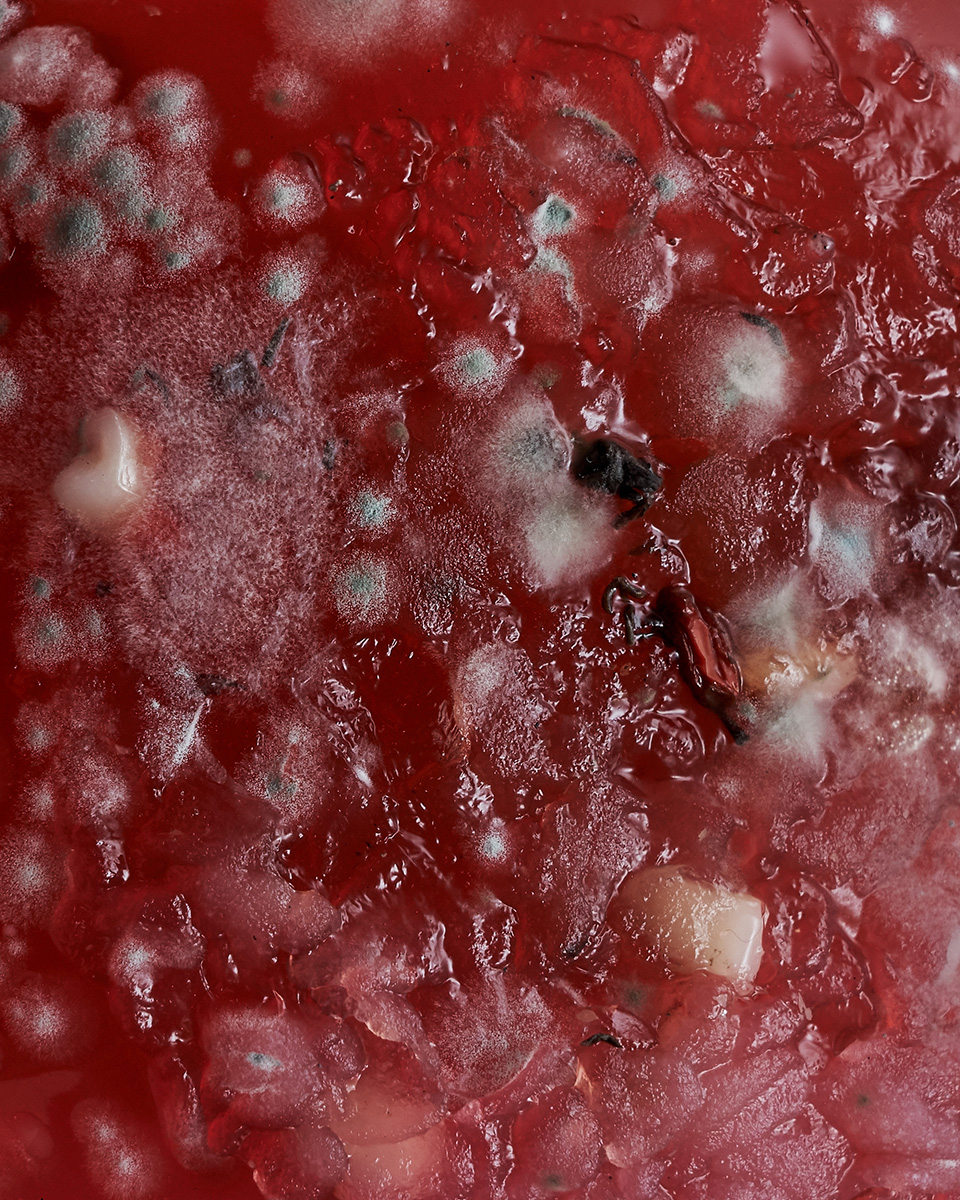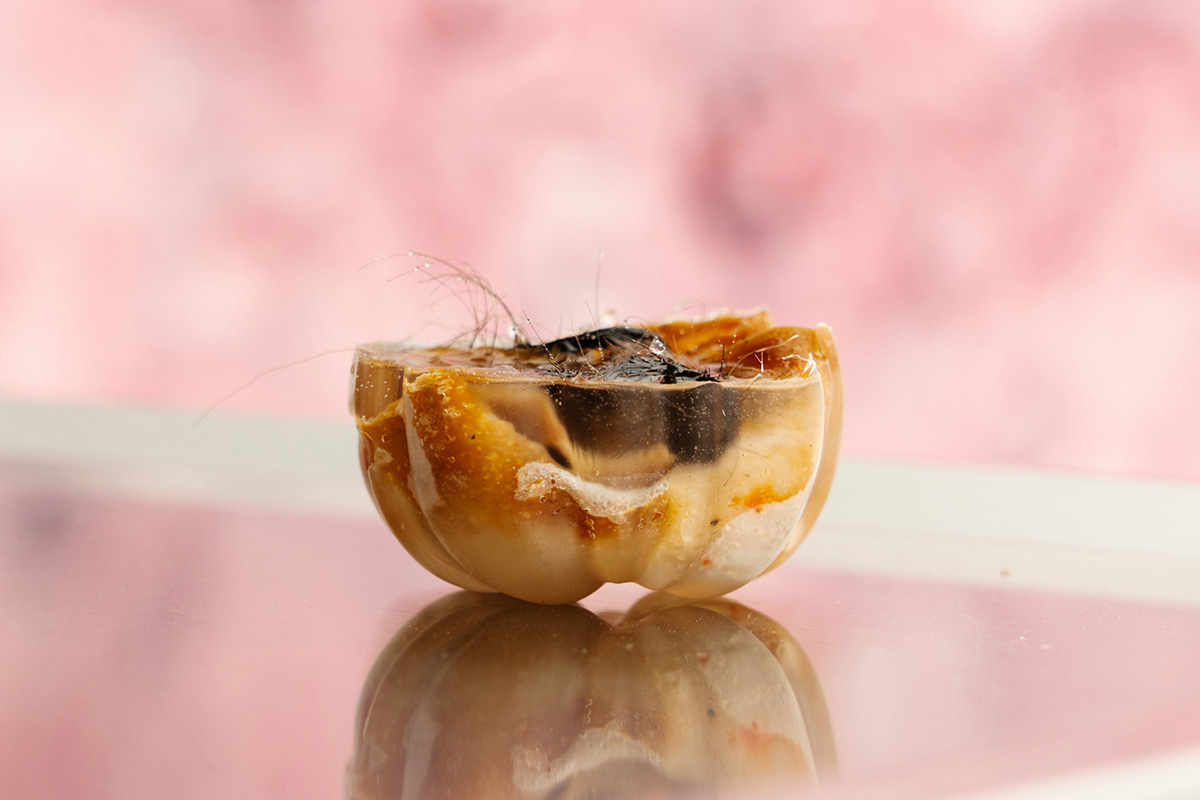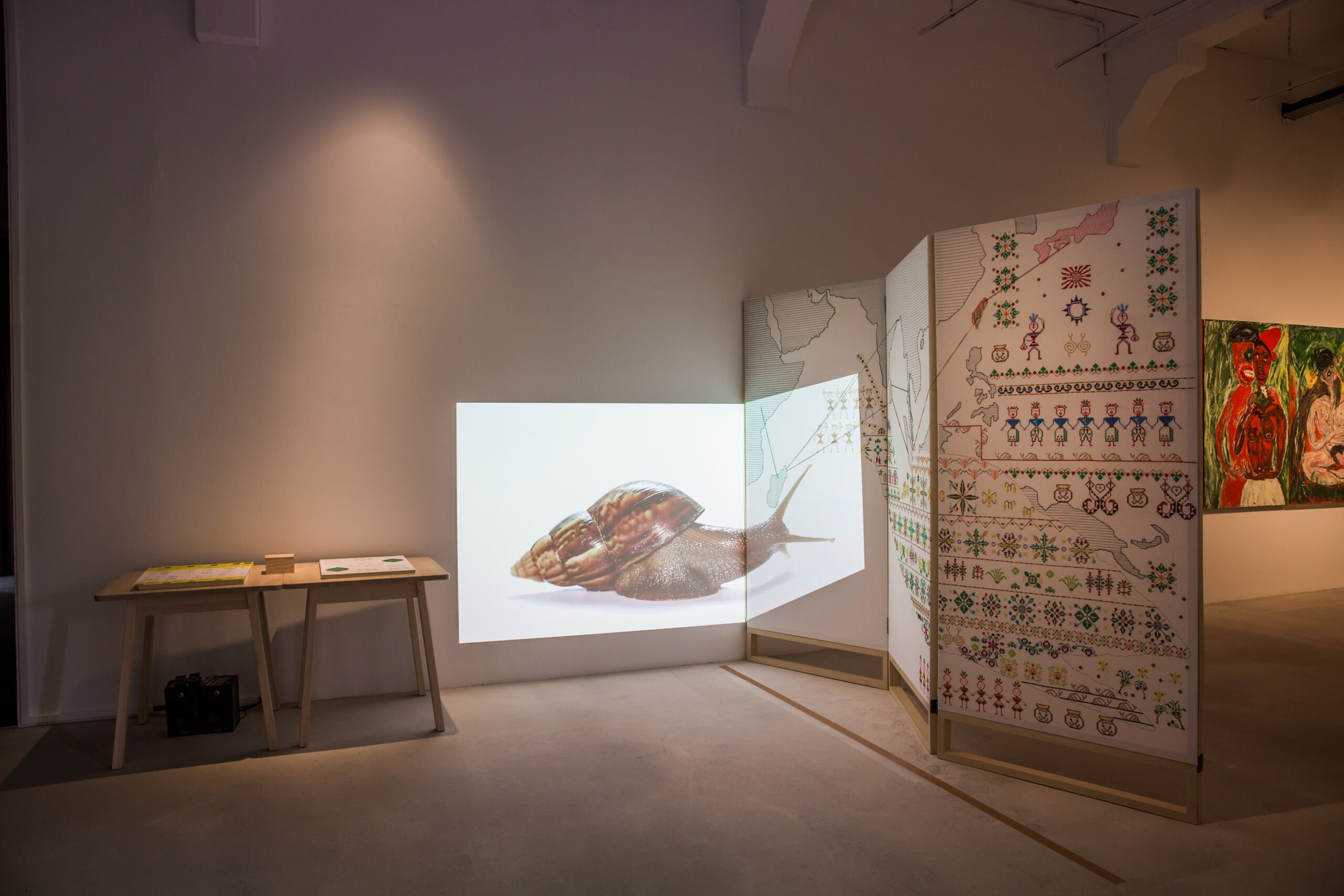OVERVIEW
I explore food as a material world and the mutually transformative relationship it has with a body digesting it. I dive into the idea of composting as a material metaphor, abject within food and the full spectrum of sensual chewing and digesting experiences.
All images and text provided by Joanna Wierzbicka.
ABOUT THE PRACTICE
My practice focuses on the body within the feminist posthumanities, especially new materialism discourse. Through the iterative process of photographing (often with the use of different apparatuses including microscopes and medical scans), as well as printing and sculpting, I bring attention to matter as an active agent and search for the physicality of forms awakening bodily experiences, evoking tactility, and haptics. My research is centered around the experience of embodiment and the materiality of our bodies. I am interested in their fluidity, porousness, and trans-corporeality, asking where the bodily boundaries are and why they should be determined by the skin. I seek descriptions of how we live in our bodies, what is running through and across them, and what other actants affect us. I am interested in the potential of our bodies as navigators and tools in the complex world we are enmeshed in. By questioning the stability of an individual body, I focus on the global and material effects of late capitalism and climate change. Personal, social, ecological, and political transformations are interdependent–our embodiment is affected and can affect. I create metaphors of how we can co-emerge with other forms of matter, performing a dance between different agencies. Often balancing lines of oppositions such as internal/external, self/the other, object/subject, I recall the definition of the abject and try to translate the derived sensations in my work—how a breakdown in meaning, something expelled from “I”, eventually defines “I”.

PROCESS
Food has always been a recurring element in my practice, recently becoming one of the key elements, as a starting point to dwell on different explorations. Food as a material world is constantly moving in and through our bodies, mutually transforming its relationship with the eater. Who is the foreign body in this context? My body for food or food for my body? Before digesting we are both foreign to each other. Who has more agency? Our materialities and flesh are mutable, there is a constant dialogue and exchange. Nuanced biological processes are redefining bodies as changing and transforming.
The figuration of compost becomes a useful metaphor for imagining the constant movement inside our bodies and the flow of organic matter. It widely describes the relations between various bodies and entities. It talks about how we are always becoming with others, together creating a lively matter of composting, composing and decomposing each other. Can we rethink relations between human and nonhuman actants to account for a more ethical living?


Bringing attention to matter as an active agent is one of my core interests; but, what about edible matter? Jane Bennett points out in her book, Vibrant Matter: A Political Ecology of Things, “with the exception of the cookbook author or restaurant reviewer who features the color, texture and aroma of ingredients, food writing seldom attends to the force of materiality”¹. I want to celebrate food fully, so materiality is usually my first step in the process—taking out the organic waste bin, opening the fridge, foraging, and collecting friends’ hair after a haircut. It becomes a sensual experience, like preparing a meal with extra care and eye for texture and materiality. I make what I call flat sculptures, various arrangements of collected elements. I either make them into a sculpture as in my duo exhibition I may have bitten off than I can chew, with Natalie Janula, or photograph them to print and sculpt after. My flat sculptures have become environments for Freya Douglas Ferguson‘s jewelry pieces, where silver jewelry organisms float inside and merge with the surface of a soup of strawberry compote with rhubarb.
- ¹ Jane Bennett, Vibrant Matter: A Political Ecology of Things (2009), pg. 43
I am also very intrigued by the abjective realm of food: the relationship between the inside/outside, the attractive/repulsive. What if you spit out what you just ate? Would you put it back on your plate? Would you eat it again? What about partly digested food that becomes vomit? What about the “ick” you get from finding a used chewing gum underneath your desk? And if a hair ends up in your food? Are you going to take it out and continue on eating or did the utter horror evoked in your body end your feast for good?

Last year, Natalia Janula and I explored a humorous perspective. Traditional Eastern European aspic, specialties of vegetable and meat encased in a jelly became the departure point for diving into the poetics of eating, their rituals, and social narratives. We have been looking at eating as a sensorial and emotional experience that shapes our collective memory, nurtures communities, and connects people across a table. In its final outcome the project became the exhibition I may have bitten off more than I can chew, curated by Amélie Mckee at the Generation & Display Gallery.
ABOUT THE ARTIST
Joanna Wierzbicka (b.1995) is a Polish-born London-based artist working across photography, sculpture, video, and installation. Through the iterative process of photographing, printing and sculpting, she brings attention to matter as an active agent and searches for the physicality of forms awakening bodily experiences, evoking tactility and haptics. She seeks descriptions of how we live in our bodies, what is running through and across them, and what other actants have affected us.
















